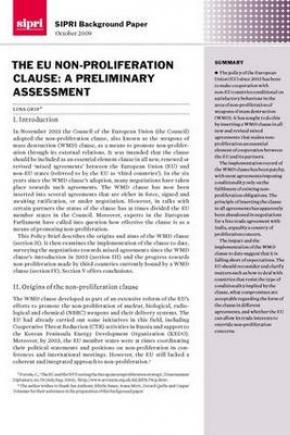The independent resource on global security
The EU Non-proliferation Clause: A Preliminary Assessment
The European Union (EU) introduced the non-proliferation clause, also known as the WMD clause, in 2003 as a way to encourage its non-EU partners to enhance their participation in and implementation of multilateral non-proliferation instruments. This paper critically surveys the record of implementation of the WMD clause. In particular, it examines how the EU has fared—and sometimes failed—in its efforts to include the WMD clause in agreements with third countries. Finally, it poses fundamental questions about how the implementation record to date affects the prospects for the clause.
Table of contents
I. Introduction
II. Origins of the non-proliferation clause
III. The non-proliferation clause in mixed agreements
IV. The non-proliferation clause and progress by third country partners
V. Conclusions

